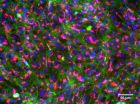(Press-News.org) DOWNERS GROVE, Ill, August 7, 2015 -The FDA recently approved two new endoscopic bariatric therapies (EBT) for the treatment of obesity. According to the American Society for Gastrointestinal Endoscopy (ASGE), this development provides important new, minimally invasive tools for combating the obesity epidemic and offers many patients an alternative to surgery.
The ReShape™ Integrated Dual Balloon System (ReShape™ Dual Balloon) was approved by the FDA on July 29. The ORBERA™ Intragastric Balloon was approved by the FDA on August 6. Many new and emerging treatments can be performed endoscopically, providing an effective and minimally invasive approach that fills a gap in the management of obesity and related conditions. Despite the positive impact of bariatric surgery on individual patients, only about 1 percent of qualified candidates undergo these surgical procedures.
"Endoscopic bariatric therapies offer a viable, safe alternative for patients who have been unsuccessful at weight loss with diet and exercise. They may also be appropriate for patients who are not suitable for, or are unwilling to undergo, a more invasive surgical procedure," said Christopher C. Thompson, MD, MHES, FASGE, chair of the ASGE Bariatric Endoscopy Task Force.
A new meta-analysis from the ASGE concluded that endoscopic bariatric therapies can be effective options and are most beneficial when used as part of a comprehensive, multidisciplinary treatment program.
The ASGE systematic review and meta-analysis assessed EBTs using diagnostic/therapeutic thresholds established in 2012 as part of its Preservation and Incorporation of Valuable endoscopic Innovations (PIVI) initiative. The PIVI program was initiated to identify important clinical questions related to endoscopy and to establish reasoned diagnostic and/or therapeutic thresholds for endoscopic technologies designed to resolve these questions.
This review and analysis, written by members of the ASGE Bariatric Endoscopy Task Force and the ASGE Technology Committee, is available on the web at http://www.giejournal.org/article/S0016-5107(15)02271-3/fulltext. It analyzed all of the currently available literature for endoscopic bariatric therapies and identified devices that had been extensively studied.
The task force concluded that endoscopic IGB therapy with the ORBERA™ device meets or exceeds the following predetermined efficacy threshold:
EBT intended as a primary obesity intervention in Class II/III obese individuals (body mass index 35 kg/m²) should achieve a mean minimum threshold of 25 percent excess weight loss (%EWL) measured at 12 months.
Intragastric balloons intended for weight loss consist of one or more balloons that are placed into the stomach through the mouth using a minimally invasive endoscopic procedure while the patient is under mild sedation. As long as the balloons (filled with saline) are in place, they help patients to feel full so they eat smaller amounts. When it is time to remove the balloons, they are first deflated then removed using another endoscopic procedure. Balloons are typically removed after six months, with patients remaining in a lifestyle support program for one year to maintain weight loss. The intragastric balloon can be placed in an outpatient setting.
EBT should be performed in the context of a comprehensive, multidisciplinary treatment program including nutritional support, nursing care, behavioral medicine and other components of obesity management. Both didactic and hands-on endoscopic training and skill acquisition with EBT techniques, technologies and clinical management of obese patients will be needed before performing EBT procedures.
"The ASGE is pleased that the FDA has approved these new devices and looks forward to providing the support and education that will allow our members to use these devices as part of a multidisciplinary weight management program in patients with obesity," said ASGE President Douglas O. Faigel, MD FASGE. "Gastrointestinal endoscopists will have an important role to play in combatting this difficult and growing epidemic."
INFORMATION:
About the American Society for Gastrointestinal Endoscopy
Since its founding in 1941, the American Society for Gastrointestinal Endoscopy (ASGE) has been dedicated to advancing patient care and digestive health by promoting excellence and innovation in gastrointestinal endoscopy. ASGE, with more than 13,000 members worldwide, promotes the highest standards for endoscopic training and practice, fosters endoscopic research, recognizes distinguished contributions to endoscopy, and is the foremost resource for endoscopic education. Visit http://www.asge.org and http://www.screen4coloncancer.org for more information and to find a qualified doctor in your area.
Media Contact:
Gina Steiner, Director of Communications, gsteiner@asge.org, 630-570-5635
Athens, Ga. - Recent research published in the journal Microsystems & Nanoengineering could eventually change the way people living with prosthetics and spinal cord injury lead their lives.
Instead of using neural prosthetic devices--which suffer from immune-system rejection and are believed to fail due to a material and mechanical mismatch--a multi-institutional team, including Lohitash Karumbaiah of the University of Georgia's Regenerative Bioscience Center, has developed a brain-friendly extracellular matrix environment of neuronal cells that contain very little foreign ...
When the right gene is expressed in the right manner in the right population of stem cells, the developing mouse brain can exhibit primate-like features. In a paper publishing August 7th in the Open Access journal PLOS Biology, researchers at the Max Planck Institute of Molecular Cell Biology and Genetics (MPI-CBG) succeeded in mimicking the sustained expression of the transcription factor Pax6 as seen in the developing human brain, in mouse cortical progenitor cells. This altered the behavior of these cells to one that is akin to that of progenitors in the developing primate ...
The common baker's yeast (Saccharomyces cerevisiae) is used to make bread, wine and beer, and is the laboratory workhorse for a substantial proportion of research into molecular and cell biology. It was also the first non-bacterial living thing to have its genome sequenced, back in 1996. However, when the sequence of that genome emerged it appeared that the scientists were seeing double - the organism seemed to have two very different versions of many of its genes. How could this have happened?
Researchers from the Centre for Genomic Regulation (CRG) Barcelona, Spain, ...
Berkeley -- While the eyes may be a window into one's soul, new research led by scientists at the University of California, Berkeley, suggests that the pupils could also reveal whether one is a hunter or hunted.
An analysis of 214 species of land animals shows that a creature's ecological niche is a strong predictor of pupil shape. Species with pupils that are vertical slits are more likely to be ambush predators that are active both day and night. In contrast, those with horizontally elongated pupils are extremely likely to be plant-eating prey species with eyes on ...
This news release is available in French and German.
Every year, more than a million fish are used for toxicity testing and scientific research in the EU alone, and around 400 fish are needed for a single fish early-life stage test. Such toxicity tests are often required by regulatory authorities for new chemical substances, as fish are particularly sensitive to contaminants in water at early developmental stages. However, the increasing use of experimental animals is ethically questionable. In addition, conventional tests are complex, expensive and take ...
Coral Gables, FL (August 7, 2015)--Two new studies show that the tone of a candidate's voice can influence whether he or she wins office.
"Our analyses of both real-life elections and data from experiments show that candidates with lower-pitched voices are generally more successful at the polls," explains Casey Klofstad, associate professor of political science at the University of Miami College of Arts and Sciences, who is corresponding author on both studies.
The first study, published online in Political Psychology, shows that candidates who ran in the 2012 U.S. ...
CRG researchers have proposed a new theory to explain the origin of whole genome duplication at the beginning of the yeast lineage. Yeasts are single-celled fungi that originated over 100 million years ago. The ability of these organisms to ferment carbohydrates is widely used for food and drink fermentation. Yeasts are also one of the most commonly used model organisms in research. For example, the yeast Saccharomyces cerevisiae, which is used to make bread, wine and beer, was the first eukaryotic organism to be sequenced (in 1996) and is a key model organism for studying ...
Medulloblastoma, the most commonly occurring malignant brain tumor in children, can be classified into four subgroups--each with a different risk profile requiring subgroup-specific therapy. Currently, subgroup determination is done after surgical removal of the tumor. Investigators at Children's Hospital Los Angeles have now discovered that these subgroups can be determined non-invasively, using magnetic resonance spectroscopy (MRS). The paper will be published online by the journal Neuro-Oncology (Oxford Press) on August 7.
"By identification of the tumor subgroup ...
TORONTO - Hearing loss in adults is under treated despite evidence that hearing aid technology can significantly lessen depression and anxiety and improve cognitive functioning, according to a presentation at the American Psychological Association's 123rd Annual Convention.
"Many hard of hearing people battle silently with their invisible hearing difficulties, straining to stay connected to the world around them, reluctant to seek help," said David Myers, PhD, a psychology professor and textbook writer at Hope College in Michigan who lives with hearing loss.
In a ...
Philadelphia - A large randomized clinical trial of an emergency department (ED)-based program aimed at reducing incidents of excessive drinking and partner violence in women did not result in significant improvements in either risk factor, according to a new study from researchers at the Perelman School of Medicine at the University of Pennsylvania. Contrary to previous studies which found brief interventions in the ED setting to be effective for reducing alcohol consumption to safe levels and preventing subsequent injury among patients with hazardous drinking, the new ...

